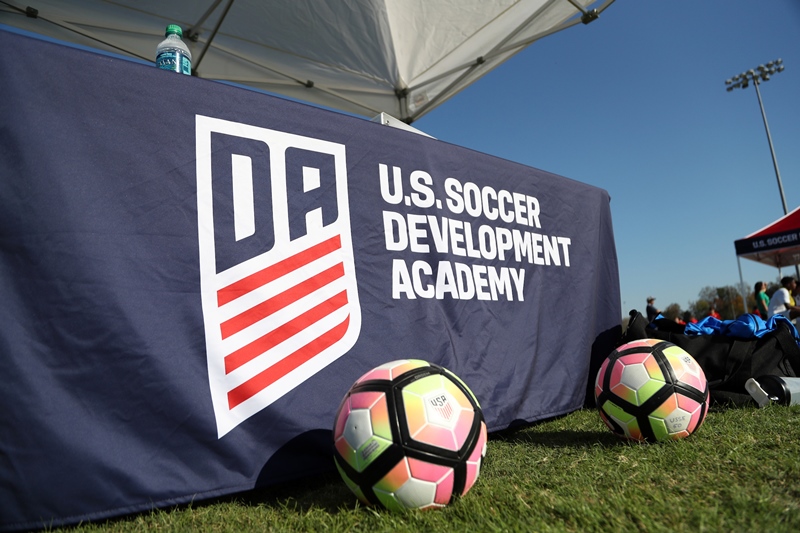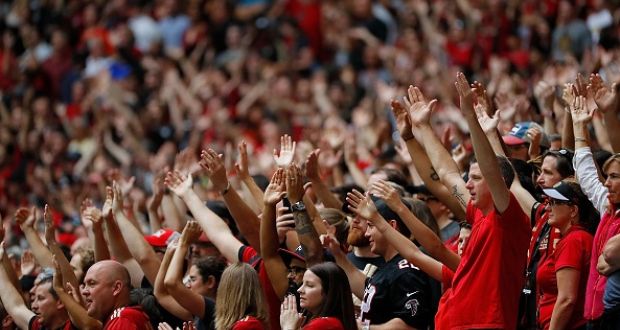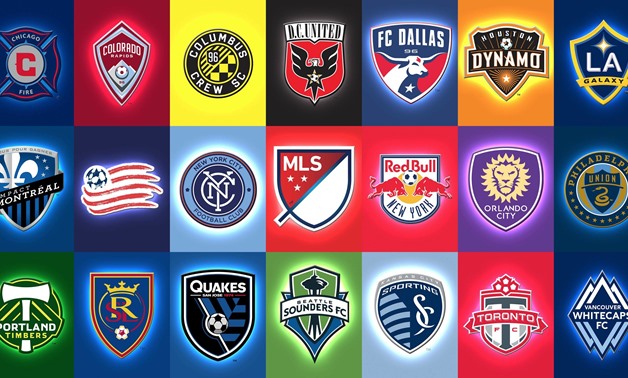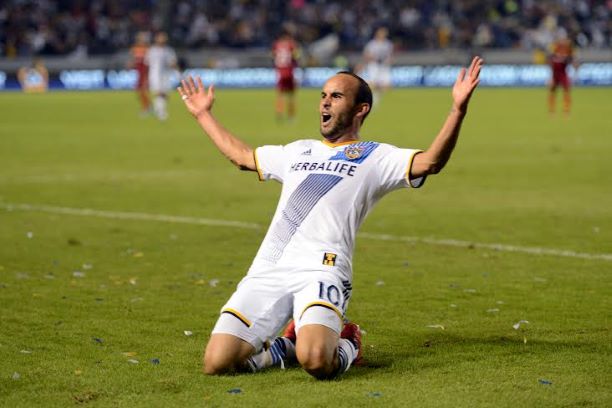Your Five Storylines to watch in the Chilean Primera
Your Five Storylines to watch in the Chilean Primera
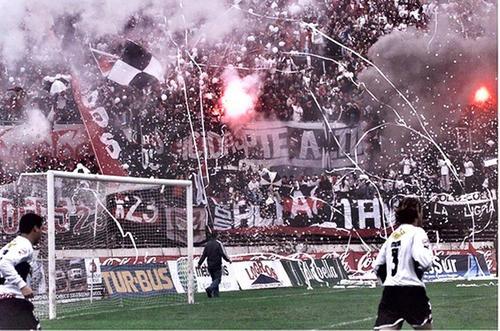

By Joel Sked
It wouldn’t be South American football without a period of disorganisation – the two go together like love and marriage – leading up to the start of a league season, and Chile has been unable to buck the trend. Up until Monday consternation surrounded the structure of the Primera División with those in power unable to come to an agreement on the format of the league after May.
Between January and May Chilean football fans will be treated to a six-month Torneo Transición – every team paying each other once – without knowing what the league will look like in the future. The team that leads the table after 17 games is crowned champion and qualifies for the 2014 Copa Libertadores. The team finishing bottom is relegated, while second bottom plays a play-off against a team from Primera B.
But on Monday, only days before the season was due to commence the player’s union, SIFUP, threw the league into disarray by calling for a postponement of the first week unless their demands were met. Carlos Soto, SIFUP president, urged certain clubs to settle their out-standing debts with players and for the reinstatement of seven substitutes rather than the five ANFP – the football federation – decided on without consultation.
The issues were swiftly corrected and the following day Sergio Jadue, ANFP president, announced the league will kick off as planned.
So as the Torneo Transición gets started, here are the five storylines to keep an eye on…
Can Colo Colo add the third star?

They have been sitting on 29 titles for over three years now. For Colo Colo, the most successful side in Chile, that is too long. A run of 9 wins in eleven matches in the Clausura had Omar Labruna’s side topping the table; their chances of ending that drought in the play-offs were being talked up by critics and fans. However, a two-legged loss to eventual runners-up Unión Española saw to it that it was too much too soon as injuries and suspensions took their weighty toll.
Yet progress had been made as their Clausura performance signalled the return to continental action later on this year in the Copa Sudamericana. The progress is expected to kick up a notch so that come May los albos will be celebrating their third star – indicating a 30th league title.
To make sure this happens Colo Colo have brought in one of the best and most exciting talents in Chile, Emiliano Vecchio from Española, along with team mate Emilio Hernandez – formerly of Colo Colo and La U. A substantial fee has been parted with to bring the duo that shone brightly in José Luis Sierra’s thrilling Española side.
The acquisitions have left Labruna with an abundance of attacking talents. However, he is not entirely happy as the club have failed to replace midfield lynchpin Rodrigo Millar or the injured centre-back Sebastián Toro. It has led to rumblings in Macul, with tension increasing between Labruna and president Carlos Tapia.
The injury to Toro and failure to bring in either Carlos Labrín or Lucas Domínguez has restricted Labruna to a back four rather than his preferred back three.
Despite the off-field wrangling and pressures – Labruna is in bother with the police after crashing his car and then telling the authorities it was his wife who was driving – el cacique faithful are expectant with Vecchio saying as much this week: “we are the biggest team of Chile, and here there is no second place.”
Sampaoli-less La U
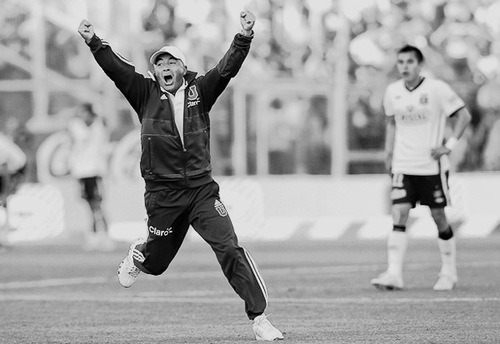
For the last two years Universidad de Chile have been the dominant team winning three league titles and a Copa Sudamericana. But they will have to do without Jorge Sampaoli after he took over the reins of the national team.
The new man at the helm is fellow Argentine Dario Franco, and the sight of La U running amok against teams in Chile and the continent may be consigned to the past. While still wanting La U to carry the role of protagonists, Franco is attempting to instil a more measured approach to los azules’ game. There will still be moments of ferocious attacking but it will refined to include periods of patience and ball circulation in midfield.
It is a feature that has been welcomed by the squad. For the last 24 months a core of players have been playing at their maximum; pressing and attacking at a fierce intensity every few days. Many players have had their first lengthy break since the beginning of 2011 when Sampaoli took over, and keeping hold of the ball in midfield should aid their freshness, improving their ability to win the ball back quicker and higher up the pitch.
Transfer business is complete with the notable acquisitions of Cesár Cortés and Ramón Fernández – two key performers for Huachipato and O’Higgins respectively in 2012.
It appears a 4-3-¾-2-3-1 formation will likely be used, and not necessarily with a fixed striker, meaning the likes of Fernández, Gustavo Lorenzetti, Sebastián Ubilla and Juan Ignacio Duma will have freedom to bamboozle the opposition and interchange in the forward positions.
Youth matters
One of the Chilean Primera Division’s most endearing qualities is its proclivity in giving players first team action from an early age. The old adage of ‘if you’re good enough, you’re old enough’ applies. One of the most prominent examples is Ángelo Henríquez. Gustavo Canales had left for China and Jorge Sampaoli needed a striker. Rather than complain to the directors he threw ‘Astroboy’ into action and after a thumping goal in his Copa Libertadores debut at the age of 17 he soared, scoring 15 goals in 27 games before making the move to Manchester United.
At the current Sudamericano Sub 20 tournament, where Chile currently have a record of five wins and one defeat, everyone seems to be talking about the boundless talent in the la rojita’s ranks. As Bryan Rabello and Diego Rubio soon head back to Europe there are a host of players waiting to be given a chance to attempt to make a similar impression to Henríquez – and this should be the year.
The Universidad de Chile trio of Igor Lichnovsky, Valber Huerta and Sebastián Martínez are regarded highly, and without an extensive number of defensive options all three will become even more prominent in the team. That is if they are not whisked away to Europe beforehand.
Claudio Baeza’s flexibility and mobility has radiated and with Colo Colo needing a central midfielder to play alongside Fernando de La Fuente he could be an ideal candidate.
The O’Higgins duo of Cristián Cuevas and Fuentes should be provided with more game time under Eduardo Berizzo, especially the former who has already undergone a trial at Chelsea. Direct and tricky, Cuevas is a really exciting prospect.
Palestino have arguably the goalkeeper of the tournament in Darío Melo as well as right-back Felipe Campos who has shared responsibilities with Fuentes at right-back.
Others to keep an eye on are Andres Roblés at Santiago Wanderers and the precocious 17-year-old Diego Rojas at Universidad Católica.
Challengers to the Santiago elite
The benefits of the play-offs at the end of each torneo were laid out for all to see with the culmination of the Clausura title where Huachipato earned their el campeon del sur nickname at the expense of Unión Española – none of Colo Colo, Universidad Católica or Universidad de Chile were in sight.
The two finalists will lead the charge again, despite having their stand-out performers ripped from their clenched, protective fists. Both sides have made shrewd moves in the transfer market with Huachipato bringing in Palermo’s Chilean centre-back Carlos Labrín, who is in need of some first team football. Huachipato prided themselves on a solid rearguard and a mixture of fantasy and industry further up the pitch.
Española brought in a host of players who have already had an affect as la furia roja were the first team to reach the semi-finals of the Copa Chile. Francisco Castro, a key component of La U’s Copa Sudamericana win, has arrived on loan to reignite a stalled career. And he could not have shown up at a better club for expansive and entertaining football. So to has Gustavo Canales, but a positive test for a banned substance while playing in Argentina means it is uncertain as to when he will return to action. Española’s best move however was renewing the contract of coach José Luis Sierra.
Elsewhere Deportes Iquique, the team to collect the second biggest points tally in 2012, should be enthralling viewing once new signings Edson Puch and Manuel Villalobos strike up a relationship with Cristián Bogado and Rodrigo Díaz. New manager, the youthful Cristian Díaz, is another to have mentioned his approach to football is loosely based on Marcelo Bielsa.
Cobreloa, under the demanding Marcos Antonio Figueroa can’t be discounted. Returning to the club for the second time as a coach and where he won the 1992 Primera División as a player the controversial character has already made his mark, judging by the zorros del desierto’s recent Copa Chile performances against O’Higgins. Francisco Pizarro appears to be a significant signing from Católica, while Figueroa should get the best out of experienced enganche, Leandro Gracián in his 3-4-1-2 formation; although he has shown that the squad has the flexibility to play 4-4-2.
New to the party
While Ñublense return to the Primera Divsión after a only a one year sojourn in Primera B, Everton and more pertinently San Marcos de Arica have had to bide their time. Everton are back in for the first time since 2010, while San Marcos end a 27 years wait top-flight action.
The trio are at a disadvantage in that they only have six months rather than the usual 12 to prove they’re are good enough for the Primera. A quick start is imperative with only 17 games standing between them and an immediate return to Primera B.
San Marcos pulled off the signing that prompted a collective raising of eyebrows among fans from different club with the addition of Nicolás Trecco after the Argentine was free to leave Católica. He showcased his considerable ability at Cobreloa, and along with Francisco Ibañez and Renato Ramos San Marcos should not be short of goals.
Everton de Viña del Mar – named after England’s Everton – will get to play Rangers in the top-flight. Their strongest asset is their midfield through Maximiliano Cervatto’s playmaking, and the Uruguayan is supported by Ángel Rojas and Fernando Saavedra. Franco Ragusa should spark the interest of those who have followed Chile’s progress in the Sudamerican Sub 20 – Ragusa had a stint in goals, keeping a clean sheet against Argentina after Melo was red carded.
This piece was written by Joel Sked, a Chilean football expert. You can follow him on twitter here. Comments below please.

